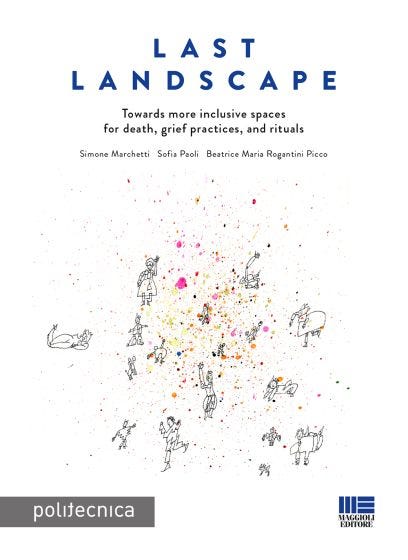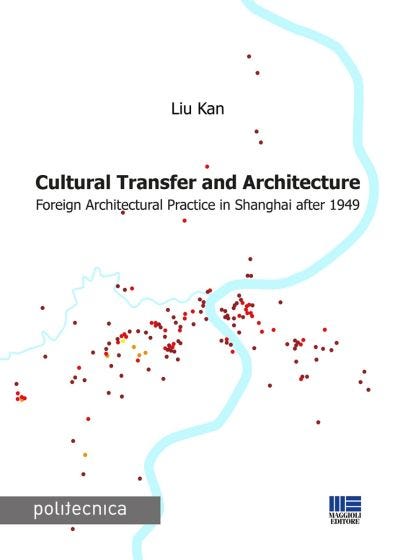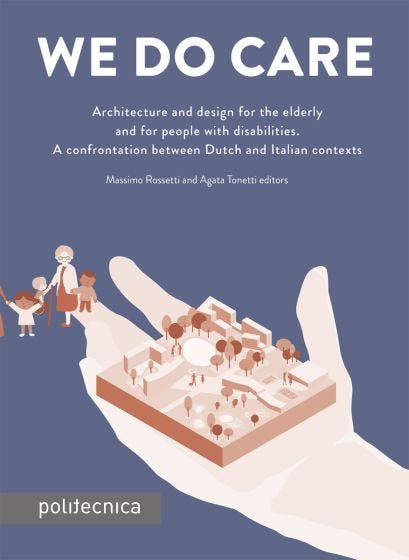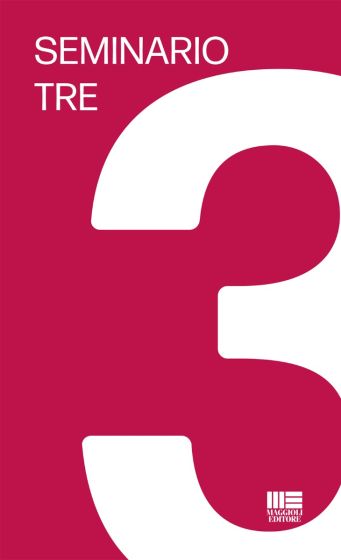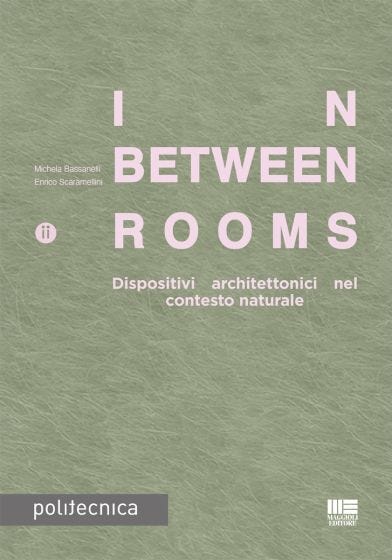Last Landscape
Towards more inclusive spaces for death, grief practices, and rituals
di Simone Marchetti, Sofia Paoli, Beatrice Maria Rogantini Picco
Concrete, cold marble, fake flowers with neon-like colors.
This is often how we perceive cemeteries in Italy, overcrowded condominiums resembling lifeless cities.
We are living in a historical moment of existential – and climatic crisis where the need for places of remembrance is growing, as well as the need to rethink the spaces of death to answer a multicultural society. From this point of view, institutions in Italy are stuck in a nineteenth-century conception of cemeteries, old and obsolete, unable to accommodate different rituals and spiritualities due to legislative - and therefore architectural - inability to offer real alternatives.
Why are cemeteries only considered as spaces for the dead, and not as places for the living? What is the reason behind the repatriation of the bodies? Why haven’t cemeteries evolved with the city and its citizens? Where does spirituality come from and why do we need it? Is it possible to give a design response to the contemporary need for places of spirituality? Is it possible to design spaces that can help a healthy separation from the loved ones?
This book aims to investigate these questions, observing the old and new dynamics that revolve around the theme of death, the treatment of the body, the business around the funeral rites, the places of death, and finally the symbolic and psychological meaning of the final key moment in a person’s life. Death is still a central moment of reflection in life, a matter that institutions cannot hide and forget.
Being aware that there is no single and universal solution, this book also gives space to a new sensitivity towards the environment, trying to provide not just design answers but highlighting the need for a profound discussion on the need for a greater inclusivity in the spaces of death.
A multitude of bodies and cultures that cannot and must not conform to a single and predominant treatment / ritual, and that could finally find their space to express their beliefs.
An inclusion that must necessarily go through a review of the practices and methods of treating the bodies.
We also wish to bring on a discussion on how individuals with multiple marginalized identities face different access in attaining a good death and use this knowledge to bring equity to end-of-life care and to the spaces of death.
“Today every city in the world hosts different religious and social communities that live and deal - not always easily or with the proper spaces - with funeral cerimonies and rituals. It is important to address the fact that multiculturalism and integration imply different ways of interweaving the end of life with religious - or non religious - rituals and burials procedures.”
Stefano Boeri
Simone Marchetti
(1990) is an architect and research fellow at Politecnico di Milano. After his experience at the London-based bureau EcoLogicstudio working on the overlapping areas between biotechnology, architecture, and urban design, he continues his research work in Milan. Since 2017 he has been a collaborator in the Research Division at Stefano Boeri Architetti, where he is involved in projects in the field of urban forestry and urban resilience. He has been an Assistant Professor at the MA Urban Planning course, Politecnico di Milano, since 2020 and has been invited guest lecturer at Harvard GSD. Some of his other undergraduate experiences include courses on sustainability in architecture & urban planning and principles of passive-house planning at the Technische Universität Wien and at Universität für Bodenkultur Wien (BOKU) in Vienna in 2016.
Sofia Paoli
(1992) is an architect and research fellow at Politecnico di Milano, Department of Architecture and Urban Studies. Sofia collaborates with Stefano Boeri Architetti in the Research Division. Her main interests and research are around the topics of urban planning, focusing on urban forestry, urban sustainability and resilience, urban policy strategies, and nature based solutions. She has been an Assistant Professor at Università degli Studi di Firenze, Department of Design and Architecture DIDA, at Politecnico di Milano MA Urban Planning course, andinvited guest lecturer at Harvard GSD.
Beatrice Maria Rogantini Picco
(1990) graduated in 2017 in architecture at Politecnico di Milano. Beatrice currently works in the architecture and interior design studio Luisa Olazabal in Madrid, where she is working on the design, construction, decoration, and site management of a Hotel in Seville, a private house in Marbella, a private house in the north of Spain and a pavilion for celebrations in Madrid. Until 2019 she worked for Emilio Tuñon Architecture Studio in Madrid and collaborated on the graphic design of the book “The houses I live in” by Mauro Gil Fournier, architect and urban planner in Madrid. She has been Assistant Professor at the Università degli degli Studi di Firenze and invited guest lecturer at Harvard GSD.
Concrete, cold marble, fake flowers with neon-like colors.
This is often how we perceive cemeteries in Italy, overcrowded condominiums resembling lifeless cities.
We are living in a historical moment of existential – and climatic crisis where the need for places of remembrance is growing, as well as the need to rethink the spaces of death to answer a multicultural society. From this point of view, institutions in Italy are stuck in a nineteenth-century conception of cemeteries, old and obsolete, unable to accommodate different rituals and spiritualities due to legislative - and therefore architectural - inability to offer real alternatives.
Why are cemeteries only considered as spaces for the dead, and not as places for the living? What is the reason behind the repatriation of the bodies? Why haven’t cemeteries evolved with the city and its citizens? Where does spirituality come from and why do we need it? Is it possible to give a design response to the contemporary need for places of spirituality? Is it possible to design spaces that can help a healthy separation from the loved ones?
This book aims to investigate these questions, observing the old and new dynamics that revolve around the theme of death, the treatment of the body, the business around the funeral rites, the places of death, and finally the symbolic and psychological meaning of the final key moment in a person’s life. Death is still a central moment of reflection in life, a matter that institutions cannot hide and forget.
Being aware that there is no single and universal solution, this book also gives space to a new sensitivity towards the environment, trying to provide not just design answers but highlighting the need for a profound discussion on the need for a greater inclusivity in the spaces of death.
A multitude of bodies and cultures that cannot and must not conform to a single and predominant treatment / ritual, and that could finally find their space to express their beliefs.
An inclusion that must necessarily go through a review of the practices and methods of treating the bodies.
We also wish to bring on a discussion on how individuals with multiple marginalized identities face different access in attaining a good death and use this knowledge to bring equity to end-of-life care and to the spaces of death.
“Today every city in the world hosts different religious and social communities that live and deal - not always easily or with the proper spaces - with funeral cerimonies and rituals. It is important to address the fact that multiculturalism and integration imply different ways of interweaving the end of life with religious - or non religious - rituals and burials procedures.”
Stefano Boeri
Simone Marchetti
(1990) is an architect and research fellow at Politecnico di Milano. After his experience at the London-based bureau EcoLogicstudio working on the overlapping areas between biotechnology, architecture, and urban design, he continues his research work in Milan. Since 2017 he has been a collaborator in the Research Division at Stefano Boeri Architetti, where he is involved in projects in the field of urban forestry and urban resilience. He has been an Assistant Professor at the MA Urban Planning course, Politecnico di Milano, since 2020 and has been invited guest lecturer at Harvard GSD. Some of his other undergraduate experiences include courses on sustainability in architecture & urban planning and principles of passive-house planning at the Technische Universität Wien and at Universität für Bodenkultur Wien (BOKU) in Vienna in 2016.
Sofia Paoli
(1992) is an architect and research fellow at Politecnico di Milano, Department of Architecture and Urban Studies. Sofia collaborates with Stefano Boeri Architetti in the Research Division. Her main interests and research are around the topics of urban planning, focusing on urban forestry, urban sustainability and resilience, urban policy strategies, and nature based solutions. She has been an Assistant Professor at Università degli Studi di Firenze, Department of Design and Architecture DIDA, at Politecnico di Milano MA Urban Planning course, andinvited guest lecturer at Harvard GSD.
Beatrice Maria Rogantini Picco
(1990) graduated in 2017 in architecture at Politecnico di Milano. Beatrice currently works in the architecture and interior design studio Luisa Olazabal in Madrid, where she is working on the design, construction, decoration, and site management of a Hotel in Seville, a private house in Marbella, a private house in the north of Spain and a pavilion for celebrations in Madrid. Until 2019 she worked for Emilio Tuñon Architecture Studio in Madrid and collaborated on the graphic design of the book “The houses I live in” by Mauro Gil Fournier, architect and urban planner in Madrid. She has been Assistant Professor at the Università degli degli Studi di Firenze and invited guest lecturer at Harvard GSD.
| Pagine | 178 |
| Data pubblicazione | Novembre 2022 |
| ISBN | 8891655707 |
| ean | 9788891655707 |
| Tipologia prodotto | Cartaceo |
| Sottotitolo | Towards more inclusive spaces for death, grief practices, and rituals |
| Collana | Politecnica |
| Editore | Maggioli Editore |
| Dimensione | 16x22 |
PREFACE
Text by Stefano Boeri
Text by Paola Sturla
Introduction
THE ORIGIN OF DEATH RITES1.1 Death and funerary rites.
Myth and symbol
1.2 Cults and memorials of the dead
THE EVOLUTION OF SOCIETY AND THE SPACE OF DEATH2.1 The history of burials and cemeteries
2.2 Contemporary cemetery design
and Natural burial grounds
SPIRITUALITY AND DEATH IN THE CONTEMPORARY SOCIETY3.1 Spirituality and Death.
From its evolution to the contemporary perspective
3.2 The economy of death
3.3 After death. The attitude towards the body and the grieving process
3.4 A sense of place
THE ROLE OF NATURE DURING GRIEF4.1 The universal symbol of nature
4.2 The healing power of narture
4.3 The cemetery as a landscape. Uitzicht Crematorium, Finisterre Cemetery, the Bluff, and Srebrnice Cemetery
THE SPACES OF DEATH5.1 Architecture
5.2 Landscape
5.3 Contemplation and Light
CONTEMPORARY TRENDS IN NON-DENOMINATIONAL CEMETERIES6.1 Projects towards more inclusivity. Capsula Mundi, Boschi Vivi, Urban Death Project, Bios Urns, Return Home
LAST LANDSCAPE PROJECT. A CEMETERY PARK IN THE FARINI RAILWAY YARD IN MILAN, ITALYCONCLUSIONS.
Intersectional perspective on death
Bibliography


